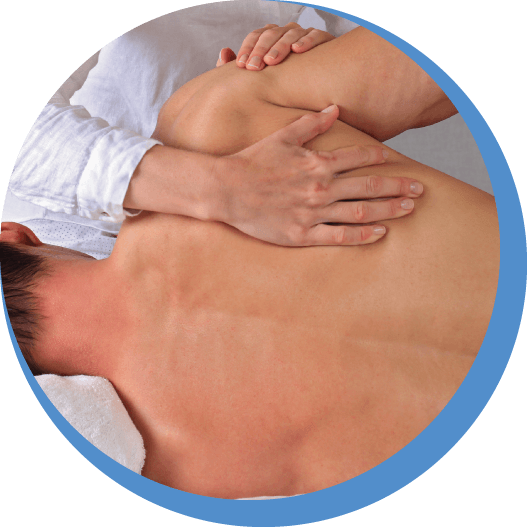Osteopathy
What do Osteopaths commonly treat?
- Sciatica
- Back pain
- Slipped disc
- Pregnancy related back pain
- Neck pain
- Headaches and Migraines
- Whiplash
- Arthritis
- Shoulder Impingement
- Frozen Shoulder
- Tennis and Golfer’s Elbow
- Repetitive Strain Injury (RSI)
- Carpal Tunnel Syndrome
- Hip Tendinitis or Bursitis
- Knee Ligament Sprains
- Knee Meniscus Tears
- Trapped Nerves
- Muscle Tension and Strains
- Ankle Sprains
- Plantar Fasciitis
- Achilles Tendinitis
- Rib Pain
- Sports Injuries
- Posture and work related problems
What does Osteopathic Treatment involve?
Osteopaths use joint articulation, joint manipulation and adjustments, deep tissue and muscle
stretching, neuromuscular techniques, muscle energy techniques, myofascial release, soft tissue manipulation and massage for pain relief, increase the mobility of joints, relieve muscle tension, stretch muscles, improve the blood and nerve supply to muscular skeletal structures and to assist the body’s healing process.
The osteopath will advise you on posture, ergonomics, diet, stress and lifestyle
changes to improve your quality of life and to prevent symptoms occurring in
the future. The osteopath will also prescribe you with specific exercises for rehabilitation and injury prevention.
NICE Guidelines – The National Institute for Clinical Excellence recommends a course of manual therapy, including osteopathic spinal manipulation, for the early management of persistent non-specific lower back pain.
The osteopath in Ashford and Dover, Kent has extensive knowledge about pathology to recognise conditions that should be referred to a qualified medical practitioner for further investigation when osteopathic treatment is not appropriate.
If you are unsure whether osteopathy treatment can help you, please call our osteopath in Ashford or Dover, Kent for advice.

Side-effects of Osteopathic Treatment
Some patient’s will experience irritation of their symptoms and soreness where treatment was carried out, it is not unusual to sometimes feel sore in the first 24-48 hours after treatment. Your pain may increase temporarily after treatment and you may even have some bruising. About half of all patients who have manual therapy get these mild to moderate side-effects, but they don’t usually last long. This is a normal, healthy response to the treatment. Your osteopath will explain any likely reactions that you could expect.

Osteopathic Treatments are covered by Private Health Insurance






